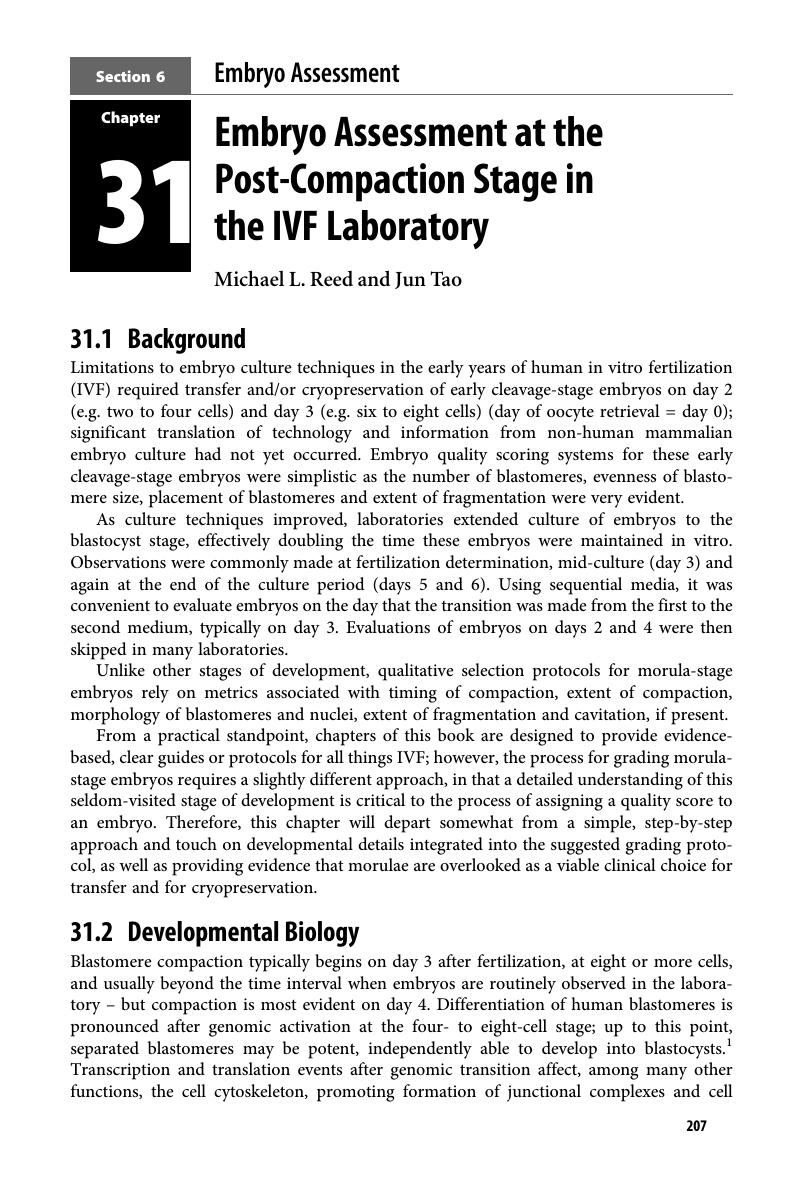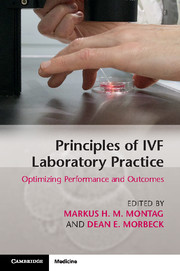Book contents
- Principles of IVF Laboratory Practice
- Principles of IVF Laboratory Practice
- Copyright page
- Contents
- Contributors
- Foreword
- Preface
- Section 1 Starting a New Laboratory and Training Protocols
- Section 2 Pre-Procedure Protocols
- Section 3 Gametes
- Section 4 Insemination/ICSI
- Section 5 Fertilization Assessment
- Section 6 Embryo Assessment
- Chapter 30 Embryo Assessment at the Pre-Compaction Stage in the IVF Laboratory
- Chapter 31 Embryo Assessment at the Post-Compaction Stage in the IVF Laboratory
- Chapter 32 Embryo Assessment at the Blastocyst Stage in the IVF Laboratory
- Chapter 33 Embryo Culture and Assessment via Time-Lapse Microscopy in the IVF laboratory
- Section 7 Embryo Cryopreservation
- Section 8 Embryo Biopsy
- Section 9 Embryo Transfer
- Section 10 Quality Management
- Index
- PDF Only
- References
Chapter 31 - Embryo Assessment at the Post-Compaction Stage in the IVF Laboratory
from Section 6 - Embryo Assessment
Published online by Cambridge University Press: 11 May 2017
- Principles of IVF Laboratory Practice
- Principles of IVF Laboratory Practice
- Copyright page
- Contents
- Contributors
- Foreword
- Preface
- Section 1 Starting a New Laboratory and Training Protocols
- Section 2 Pre-Procedure Protocols
- Section 3 Gametes
- Section 4 Insemination/ICSI
- Section 5 Fertilization Assessment
- Section 6 Embryo Assessment
- Chapter 30 Embryo Assessment at the Pre-Compaction Stage in the IVF Laboratory
- Chapter 31 Embryo Assessment at the Post-Compaction Stage in the IVF Laboratory
- Chapter 32 Embryo Assessment at the Blastocyst Stage in the IVF Laboratory
- Chapter 33 Embryo Culture and Assessment via Time-Lapse Microscopy in the IVF laboratory
- Section 7 Embryo Cryopreservation
- Section 8 Embryo Biopsy
- Section 9 Embryo Transfer
- Section 10 Quality Management
- Index
- PDF Only
- References
Summary

- Type
- Chapter
- Information
- Principles of IVF Laboratory PracticeOptimizing Performance and Outcomes, pp. 207 - 213Publisher: Cambridge University PressPrint publication year: 2017



